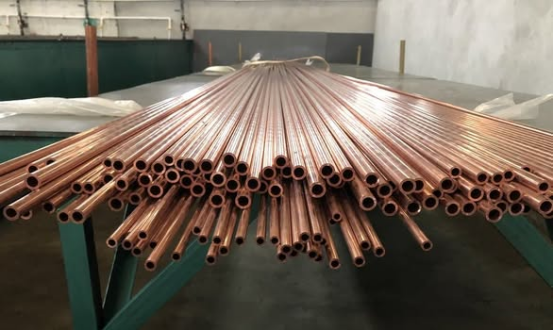Understanding the differences between different grades is crucial when choosing the right copper tubing for your project. Jindalai Steel Group Co., Ltd. specializes in manufacturing a wide range of copper tubing grades, including T1, T2, T3, TU1, TU2, and TP2 phosphorus-deoxidized copper tubing. Each grade offers unique properties suitable for specific applications, particularly in the refrigeration and piping sectors.
Differences between copper pipe grades
T2 copper tubing is known for its excellent electrical conductivity and is often used in electrical applications. T3 copper tubing, on the other hand, offers greater strength and is often used in applications requiring greater durability. TU1 and TU2 copper tubing are commonly used in plumbing and heating systems due to their excellent corrosion resistance and formability. TP2 phosphorus-deoxidized copper tubing is particularly advantageous in environments where oxidation resistance is crucial.
When choosing between these grades, consider the specific requirements of your application. For refrigeration lines in air conditioners and refrigerators, T2 and TP2 copper tubing are preferred due to their thermal conductivity and corrosion resistance.
Why choose copper tube cooling?
Copper tubing is the preferred material for refrigeration piping for several reasons. First, copper’s superior thermal conductivity compared to aluminum and steel allows for efficient heat transfer. This efficient heat transfer results in significant energy savings and improved performance in air conditioning and refrigeration systems. Furthermore, copper’s natural antimicrobial properties make it a safer choice for food and beverage applications.
In comparison, aluminum pipes, while lightweight, do not conduct heat as well and are more susceptible to corrosion. Steel pipes, while strong, are heavier and prone to rusting over time, leading to potential leaks and system failures.
Standards for copper pipes for drinking water
In drinking water applications, copper tubing must meet specific standards to ensure safety and quality. The American National Standards Institute (ANSI) and the American Society for Testing and Materials (ASTM) have established guidelines for copper tubing, including requirements for “food-grade copper tubing.” This tubing must be free of harmful contaminants and certified by organizations like NSF International to ensure the materials used are safe for drinking water.
Seamless copper pipe and welded copper pipe
Another factor to consider when selecting copper tubing is seamless versus welded copper tubing. Seamless copper tubing is manufactured without seams, resulting in a uniform structure that increases strength and reduces the risk of leaks. This is particularly advantageous in high-pressure applications, such as refrigeration lines.
Welded copper tubing is generally more cost-effective, but performance may be limited due to potential weak spots at the weld seam. They are suitable for low-pressure applications or where cost is the primary consideration.
in conclusion
Ultimately, choosing the right grade of copper tubing is crucial to ensuring the efficiency and safety of your refrigeration and piping systems. Jindalai Steel Group Co., Ltd. offers a comprehensive line of copper tubing, including T2, T3, TU1, TU2, and TP2, each carefully engineered to meet specific application needs. Understanding the differences between these grades and their respective advantages allows you to make informed decisions that will enhance the performance and lifespan of your system. Whether you require seamless or welded copper tubing, our carefully engineered, high-quality copper tubing will provide you with exceptional results.
Post time: Sep-30-2025









